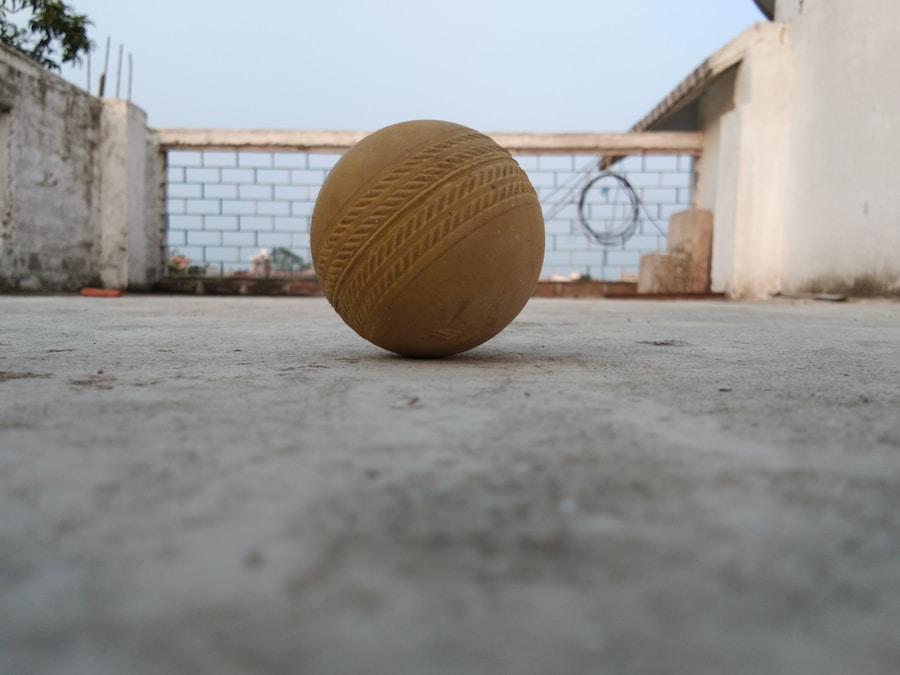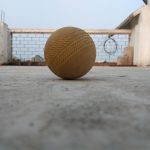The Spectacular Sport of Sepak Takraw
Description
Sepak Takraw, a sport that combines elements of soccer and volleyball, has its roots deeply embedded in the cultural fabric of Southeast Asia. The game is believed to have originated in the region over 500 years ago, with historical accounts suggesting that it was played in various forms across countries such as Malaysia, Thailand, and Indonesia. The name “Sepak Takraw” itself is derived from the Malay word “sepak,” meaning to kick, and “takraw,” which refers to the rattan ball used in the game.
This traditional sport has evolved significantly over the centuries, transitioning from informal village games to a highly organized competitive sport. The earliest forms of Sepak Takraw were likely played by local communities as a means of entertainment and physical activity. Historical texts indicate that a similar game was played during the Malacca Sultanate in the 15th century, where players would kick a rattan ball back and forth over a net.
The sport gained prominence during the 20th century, particularly in Thailand, where it was formalized with standardized rules and regulations. The establishment of the International Sepak Takraw Federation (ISTAF) in 1982 marked a significant milestone in the sport’s history, paving the way for international competitions and greater recognition on the global stage.
Key Takeaways
- Sepak Takraw originated in Southeast Asia, with its roots in traditional games played in countries like Malaysia, Thailand, and Indonesia.
- The game is played with a rattan ball and players can only use their feet, knees, chest, and head to touch the ball, making it a unique and challenging sport.
- Sepak Takraw requires a high level of agility, flexibility, and coordination, making it physically demanding for players.
- Famous players and teams in Sepak Takraw include Thailand, Malaysia, and Indonesia, who have dominated international competitions and showcased the sport’s skill and athleticism.
- Sepak Takraw has a global appeal, with growing interest and participation in countries outside of Southeast Asia, indicating a promising future for the sport on the international stage.
The Rules and Equipment of Sepak Takraw
The rules of Sepak Takraw are designed to create a fast-paced and dynamic game that emphasizes skill, agility, and teamwork. Each match is played between two teams, either in a singles format (one player per side) or a doubles format (two players per side). The objective is to score points by successfully landing the ball in the opponent’s court while preventing them from doing the same.
A match is typically played to 21 points, with teams needing to win by at least two points. If the score reaches 20-20, play continues until one team achieves a two-point lead. The equipment used in Sepak Takraw is distinctive and integral to the game’s identity.
The takraw is lightweight and has a unique design that allows for impressive aerial maneuvers. The net used in Sepak Takraw is similar to that of volleyball but is set at a lower height—about 1.52 meters for men’s competitions and 1.42 meters for women’s competitions.
Players must demonstrate exceptional footwork and coordination as they navigate around the net to execute powerful kicks, spikes, and defensive maneuvers.
The Physical Demands of Sepak Takraw

Engaging in Sepak Takraw requires a high level of physical fitness, agility, and coordination. Players must possess strong leg muscles to execute powerful kicks while maintaining balance and control. The sport demands quick reflexes and sharp decision-making skills, as players must anticipate their opponents’ moves and respond swiftly to changing dynamics on the court.
The combination of sprinting, jumping, and intricate footwork makes Sepak Takraw an intense cardiovascular workout that can significantly improve overall fitness levels. In addition to physical strength, Sepak Takraw also places a premium on flexibility and body awareness. Players often perform acrobatic maneuvers, such as bicycle kicks and flips, which require not only strength but also an understanding of body mechanics.
Training regimens for competitive players typically include exercises focused on core stability, leg strength, and agility drills to enhance their performance on the court. As a result, athletes who excel in Sepak Takraw often exhibit remarkable athleticism that can rival that of competitors in more widely recognized sports.
Famous Players and Teams in Sepak Takraw
| Player | Team | Tournament Wins |
|---|---|---|
| Boonkum Ponsana | Thailand | 5 |
| Farhan Adam | Malaysia | 3 |
| Supriyanto Eko | Indonesia | 4 |
| Phubet Chatchai | Thailand | 6 |
Throughout its history, Sepak Takraw has produced numerous talented players who have left an indelible mark on the sport. One of the most celebrated figures is Toh Ah Boon from Malaysia, who gained fame for his exceptional skills and contributions to the game during the 1980s and 1990s. His ability to execute complex shots with precision earned him accolades both nationally and internationally.
Toh’s legacy continues to inspire young players in Malaysia and beyond. Another prominent player is Thailand’s Aiyawatt Kachornkham, known for his incredible agility and strategic gameplay. Aiyawatt has represented Thailand in multiple international tournaments, helping his team secure numerous championships.
His dedication to training and mastery of techniques has made him a role model for aspiring Sepak Takraw athletes. In terms of teams, Thailand’s national team has consistently dominated the sport on the international stage, winning multiple gold medals at events such as the Southeast Asian Games and the Asian Games. Their success can be attributed to a robust training program that emphasizes skill development and teamwork.
The Global Appeal of Sepak Takraw
While Sepak Takraw has its origins in Southeast Asia, its appeal has transcended regional boundaries, garnering interest from fans around the world. The sport’s unique blend of athleticism, artistry, and cultural significance makes it an attractive spectacle for spectators. International tournaments have been instrumental in promoting Sepak Takraw globally, with events like the ISTAF World Cup drawing participants from various countries eager to showcase their skills.
The rise of social media has also played a crucial role in popularizing Sepak Takraw beyond its traditional strongholds. Clips of breathtaking plays and acrobatic feats have gone viral on platforms like YouTube and Instagram, captivating audiences who may have never encountered the sport before. This exposure has led to increased interest in local clubs and organizations dedicated to promoting Sepak Takraw in regions where it was previously unknown.
As more people become aware of this captivating sport, its potential for growth on a global scale becomes increasingly evident.
The Future of Sepak Takraw

Looking ahead, the future of Sepak Takraw appears promising as efforts continue to expand its reach and popularity. Initiatives aimed at introducing the sport into schools and community programs are gaining traction in various countries outside Southeast Asia. By fostering grassroots participation, these programs aim to cultivate a new generation of players who can carry on the traditions of Sepak Takraw while also innovating new styles of play.
Moreover, advancements in technology may further enhance the viewing experience for fans. Innovations such as augmented reality (AR) could provide spectators with immersive experiences during live matches or broadcasts, allowing them to engage with the sport in unprecedented ways. As more countries invest in developing their own national teams and infrastructure for training, Sepak Takraw could evolve into a more prominent fixture on the international sports landscape.
In conclusion, Sepak Takraw stands at a crossroads where tradition meets modernity. With its rich history, unique gameplay mechanics, and growing global appeal, it is poised for continued growth and recognition as an exciting sport that captivates audiences worldwide. As more players take up the challenge and more fans embrace this dynamic game, Sepak Takraw’s journey is far from over; it is just beginning to unfold on a larger stage.
If you’re interested in learning more about unique sports like Sepak Takraw, you should check out this article on tips and tricks for playing games on 8k8. It provides valuable insights and strategies for improving your gameplay. Additionally, you may also want to explore the most viewed apps on 8k8 by visiting this link. And if you’re a fan of strategic games, you might enjoy reading about 8k8 Chess, a unique card game based on the classic game of chess, in this article.
FAQs
What is Sepak Takraw?
Sepak Takraw is a traditional sport in Southeast Asia that is similar to volleyball, but players use their feet, knees, chest, and head to hit the ball over the net instead of their hands.
How is Sepak Takraw played?
Sepak Takraw is played on a court with a net in the middle. The game is played with a rattan ball and the objective is to hit the ball over the net and into the opponent’s court, similar to volleyball.
What are the basic rules of Sepak Takraw?
The basic rules of Sepak Takraw include not using hands to touch the ball, allowing each team three touches to return the ball, and scoring points when the opposing team fails to return the ball over the net.
What are the benefits of playing Sepak Takraw?
Playing Sepak Takraw can improve agility, flexibility, coordination, and cardiovascular endurance. It also promotes teamwork and communication among players.
Where is Sepak Takraw popular?
Sepak Takraw is popular in Southeast Asian countries such as Thailand, Malaysia, Indonesia, and the Philippines. It is also gaining popularity in other parts of the world.





